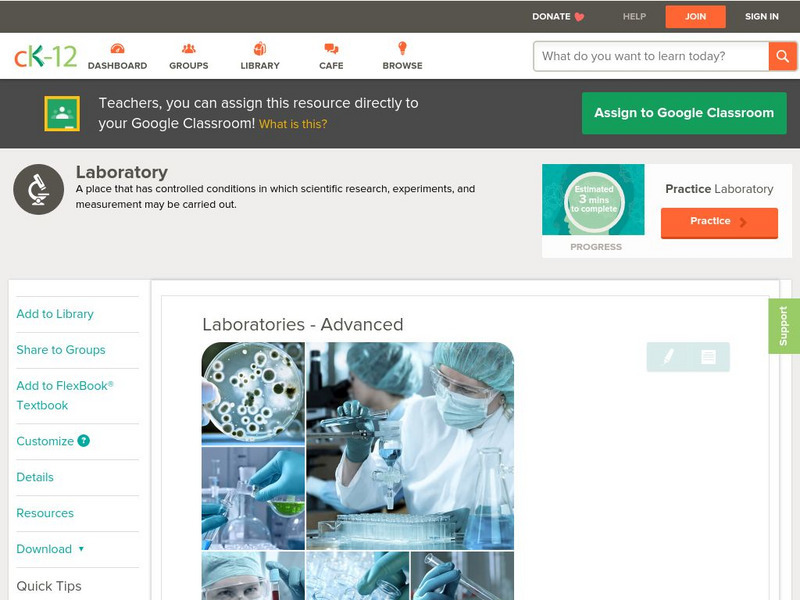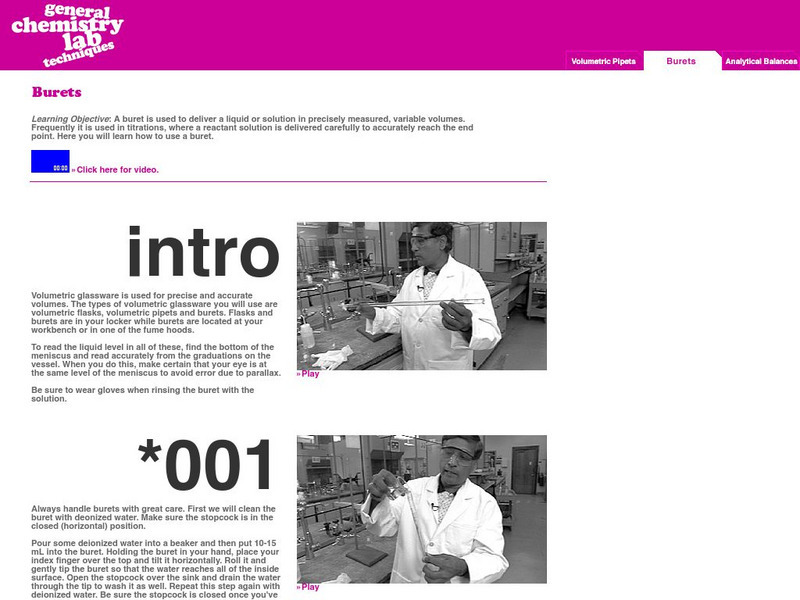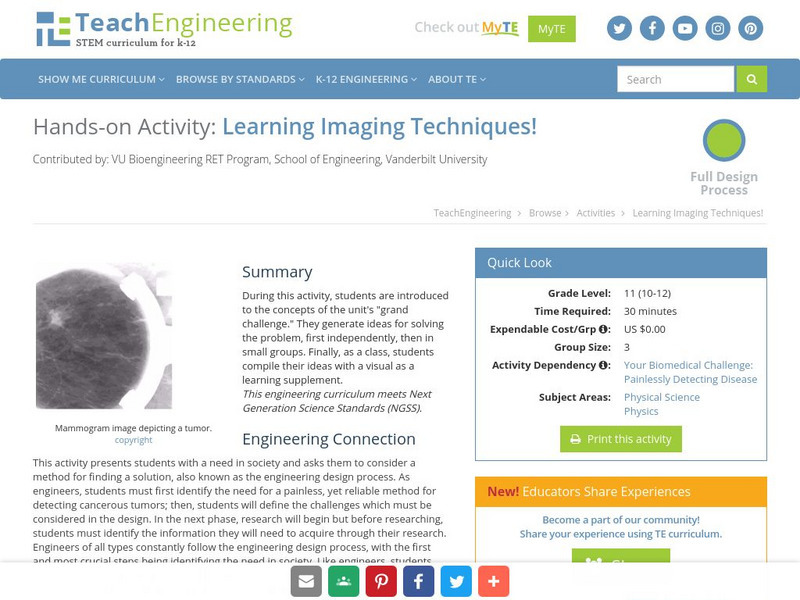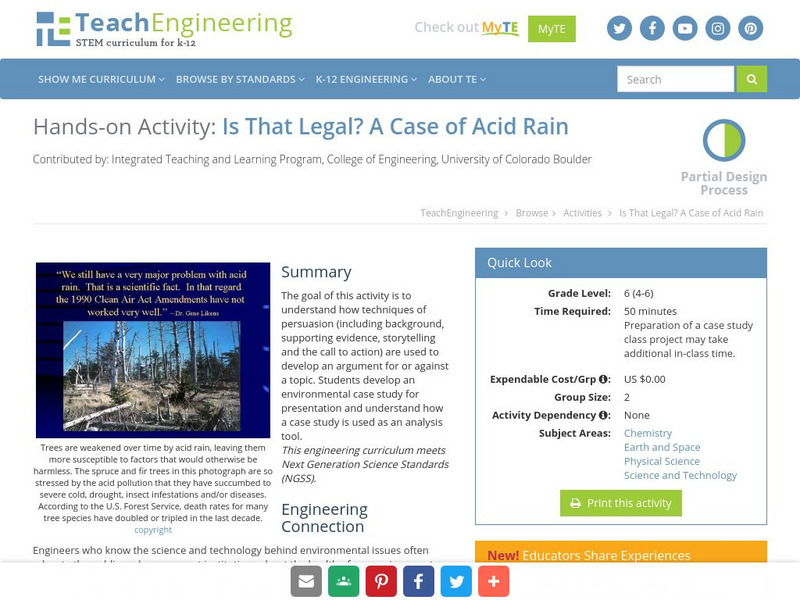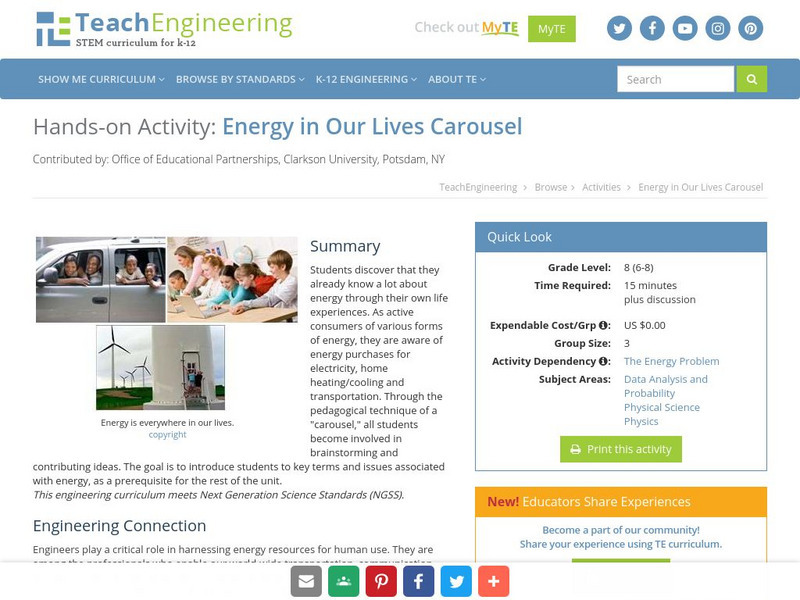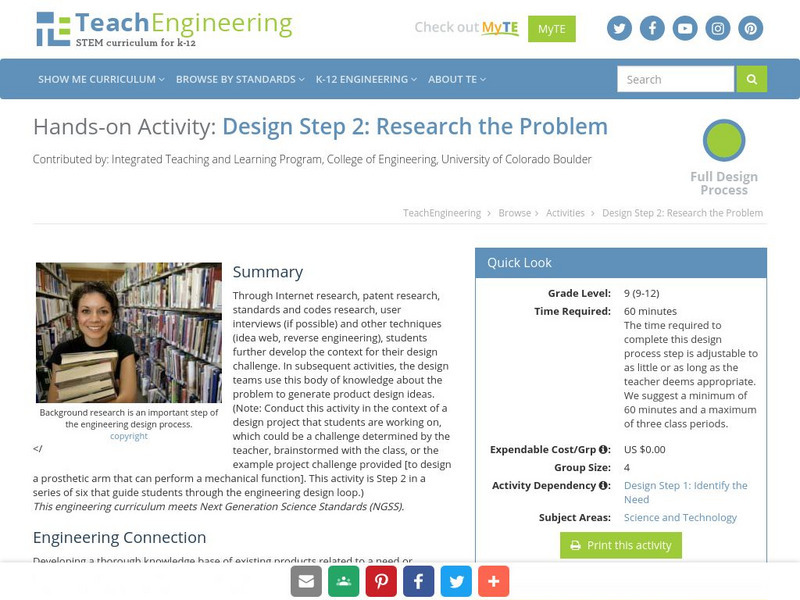Hi, what do you want to do?
Curated OER
Introduction to Gas Chromatography
Students analyze gas chromatograms and suggest various applications for gas chromatography.
Curated OER
cDNA Sequencing By Restriction Project
Learners try to confirm the sequence of a given cDNA clone using the WWW tools and traditional restriction analysis. They grow the clone, prep the plasmid, cut the plasmid with restriction enzymes and compare their results to what was...
Curated OER
What's That Brown Fuzzy Stuff On My Plum?
Students examine Koch's Postulates by actually using them. They perform each of the required four steps to show that the brown fuzzy fungus they see growing on stone fruit (plums, peaches, nectarines, cherries) is what causes them to rot.
Curated OER
Glass Blowing How Do They Make Glass Into Different Shapes?
Learners experiment with butter as a supercooled liquid in order to better explain how glass is made into different shapes.
Curated OER
Flow Rates of Faucets and Rivers
Students work together to discover the flow rates of faucets and rivers. They relate their results to engineering and applied science concepts. They make predictions on the flow rate of a nearby river in their local community.
Curated OER
The Effects of Ultra-Violet Light on Yeast
Young scholars work in small groups collecting and analyzing data as they learn how to best grow yeast. This lesson allows students to conduct several student-created experiments as they continually generate questions and hypotheses. ...
Curated OER
Operating the spectrophotometer
Working in small groups, learners explore the operation of spectrophotometer. Using the spectrophotometer, they investigate Beer's Law with everyday items.
Curated OER
Seltzer Breath
Students investigate "indicator" (Bromothymol Blue or BTB) to test for the presence of certain chemicals in liquids and gases. They compare distilled water and seltzer water for presence of carbon dioxide.
Curated OER
Egg Measurement
Students explore measurement and units. They measure eggs to determine their density, mass and percent composition. An inquiry approach is used for students to ascertain the mass.
Curated OER
From Memoir to Expository Writing with Advanced English Language Learners
Students create a memoir. They compare writing with story telling and personal experience. They analyze how they learn, so they can begin to look critically at their own learning.
Curated OER
Moon, Mars, and Beyond-Mission Briefing
Students complete this introductory lesson plan in which they find out about the scenario for a simulated online space mission. They review vocabulary and complete a review sheet to reinforce the details of the mission and its goals.
Curated OER
Assessing Water Quality in a Local Creek by Sampling Aquatic Macroinvertabrets
High schoolers experiment collecting macroinvertebrates from a stream and identify the specimens collected and then log in the information into a data table. From the data, they make qualitative and quantitative interpretations of water...
Curated OER
Flame Test
Students conduct a flame test on different substances. In this chemistry lesson, students predict the element present based on the color emitted during the flame test. They explain how different elements produce different colors.
Curated OER
How Can You Study Things You Can’t See Like: Atoms?
Students simulate how scientists studied things they can't see like atoms. In this chemistry lesson, students predict what is inside the numbered obsertainers. They design a way to investigate what's inside without opening it.
Cosmo Learning
Cosmo Learning: Chemistry Laboratory Techniques
A collection of video lectures about the lab technique of thin-layer chromatography. The videos give a step-by-step demonstration of the analytical technique from the beginning to the end. The demonstrations is broken down into five...
CK-12 Foundation
Ck 12: Biology: Laboratories
[Free Registration/Login may be required to access all resource tools.] Describes a scientific laboratory, lab equipment, and lab safety.
CK-12 Foundation
Ck 12: Laboratories Laboratories Advanced
[Free Registration/Login may be required to access all resource tools.] An overview of science laboratory procedures including information about lab equipment, lab safety, and general techniques. After the reading, watch a short video...
Alabama Learning Exchange
Alex: Separation of a Mixture
Young scholars will use their knowledge of physical properties to separate a mixture of four ingredients. The students are required to design their own laboratory procedure for separating the mixture. The separation process itself...
Yale University
Yale University: General Chemistry Lab Techniques: Burets
Tutorial shows proper procedure for handling a buret and using this piece of laboratory equipment to measure liquid volume. View accompanying video full-length [18:00] or in segments.
TeachEngineering
Teach Engineering: Learning Imaging Techniques!
During this activity, students will be introduced to the concepts of the challenge. They will generate ideas for solving the grand challenge first independently, then in small groups. Finally, as a class, students will compile their...
Science Education Resource Center at Carleton College
Serc: Physical and Chemical Properties of Water
In this lesson students will understand the difference between chemical and physical properties by studying the properties of water. Students will also understand how to perform the different laboratory techniques that go along with the...
TeachEngineering
Teach Engineering: Is That Legal? A Case of Acid Rain
The goal of this activity is to understand how techniques of persuasion (including background, supporting evidence, storytelling and the call to action) are used to develop an argument for or against a topic. Students develop an...
TeachEngineering
Teach Engineering: Energy in Our Lives Carousel
This activity is a way for students to discover that they already know a lot about energy through their own life experiences. As active consumers of various forms of energy, they are aware of energy purchases for electricity, home...
TeachEngineering
Teach Engineering: Design Step 2: Research the Problem
Through Internet research, patent research, standards and codes research, user interviews (if possible) and other techniques (idea web, reverse engineering), students further develop the context for their design challenge. In subsequent...





















